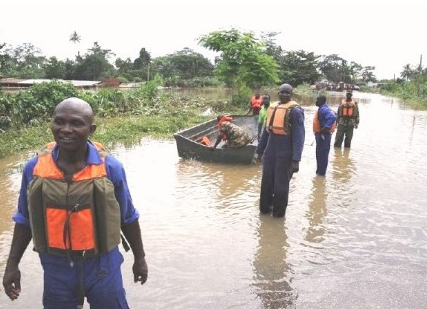Organisation
NCAP
- 3 Members
- 12 Articles
- 2 Case studies

NCAP is a programme of the Netherlands Ministry of Foreign Affairs.
Management of the NCAP is passed to an independent executing agency.
ETC International is managing the current phase of the NCAP (during 2003-2007).
The Institute for Environmental Studies (IVM) managed phase one of the NCAP (during 1996-2003).
Michael Rastall
Published in Case-study
Mainstreaming adaptation into Ghana’s national development plans
SEI assisted Ghana’s Environmental Protection Authority and its climate change focal point to develop a plan for climate change adaptation and mitigation. The project sought to strengthen Ghana’s Poverty Reduction Strategy by incorporating consideration of climate change impacts. SEI provided training on planning techniques, including a novel approach to multi-sector planning that was developed by SEI and Ghana EPA staff.
- 2nd Apr 2014
- 2 min read
- 0 Comments
Tahia Devisscher Tejada
Published in Article
NCAP Ghana project: Climate-Poverty linkages
- 9th Dec 2011
- 2 min read
- 0 Comments
Tahia Devisscher Tejada
Published in Article
NCAP Ghana: Assessment of Energy Sector
- 9th Dec 2011
- 2 min read
- 0 Comments
Tahia Devisscher Tejada
Published in Article
NCAP Ghana: Assessment of Water Sector
- 9th Dec 2011
- 2 min read
- 0 Comments
Tahia Devisscher Tejada
Published in Article
NCAP Ghana: Land Management
- 9th Dec 2011
- 1 min read
- 0 Comments
Tahia Devisscher Tejada
Published in Article
NCAP Ghana: Assessment of Agriculture Sector
- 9th Dec 2011
- 2 min read
- 0 Comments
Tahia Devisscher Tejada
Published in Article
NCAP Ghana: Assessment of Fisheries Sector
- 9th Dec 2011
- 1 min read
- 0 Comments
Tahia Devisscher Tejada
Published in Article
NCAP Ghana: Health Sector Assessment
- 9th Dec 2011
- 2 min read
- 0 Comments
Tahia Devisscher Tejada
Published in Article
Methodology of Ghana NCAP Project
- 25th Mar 2011
- 2 min read
- 0 Comments
Tahia Devisscher Tejada
Published in Article
Lessons learned from Yemen NCAP Project
- 25th Mar 2011
- 3 min read
- 0 Comments
Add your project
Exchange your climate change adaptation projects and lessons learned with the global community.
